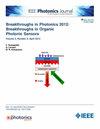显示图像对警觉性、注意力、亮度感知和视觉疲劳的黑视作用
IF 2.4
4区 工程技术
Q3 ENGINEERING, ELECTRICAL & ELECTRONIC
引用次数: 0
摘要
黑视对视觉和非视觉效果的贡献已经引起了越来越多的关注,特别是在照明研究中。然而,显示图像对其产生的影响仍未得到充分研究。本研究基于65英寸四主显示系统,研究了显示图像的黑视亮度对亮度感知、视觉疲劳等视觉效果以及警觉性、注意力等非视觉效果的影响。采用300 lx的光环境来保证棒的饱和度。在两个褪黑亮度水平(高和低)下调制异聚图像。采用多模态评估,包括主观亮度评分、卡罗林斯卡嗜睡量表(KSS)评估、精神运动警觉性任务(PVT)反应时间、注意表现指标d2测试、眼动参数和视觉功能参数。结果表明,高暗视亮度的图像引起的注视时间较长,眨眼和注视次数较少,表明注意力得到改善。在较高的暗视亮度水平下,d2测试性能也较好。此外,两种黑视亮度水平的眼动参数差异表明,除了黑视亮度水平的迈克尔逊对比外,黑视亮度值本身也起着重要的作用。此外,在较高的黑视亮度下,反应时间的增加越小,表明警觉性越高,而调节和收敛参数的减少越大,表明视觉疲劳越明显。主观评价显示,黑视亮度越高,图像越亮,瞳孔面积越小。本文章由计算机程序翻译,如有差异,请以英文原文为准。
Melanopic Contribution of Display Image to Alertness, Attention, Brightness Perception, and Visual Fatigue
The melanopic contribution to visual and non-visual effects has garnered growing concern, particularly in lighting research. However, its impacts caused by display images remain understudied. This research investigated the influence of melanopic luminance of display images on visual effects like brightness perception and visual fatigue, as well as non-visual effects such as alertness and attention based on a 65-inch four-primary display system. A 300 lx photopic environment was adopted to ensure rod saturation. The metameric images were modulated at two melanopic luminance levels (higher and lower). A multimodal assessment, including subjective brightness ratings, Karolinska Sleepiness Scale (KSS) evaluations, reaction time of Psychomotor Vigilance Task (PVT), d2 test of attention performance metrics, eye movement parameters, and visual function parameters was applied. The results showed that images with higher melanopic luminance level elicited longer fixation duration as well as fewer blinks and fixations, indicating improved attention. It was also supported by better d2 test performance at higher melanopic luminance level. Further, the difference in eye movement parameters between the two melanopic luminance levels showed that not only the Michelson contrast of the melanopic luminance levels, but also the melanopic luminance value itself played an important role. Moreover, a smaller increase in reaction time at higher melanopic luminance level implied heightened alertness, whereas the greater reduction in accommodation and convergence parameters indicated more pronounced visual fatigue. Subjective evaluation revealed that images with higher melanopic luminance level appeared brighter, supported by smaller pupil area.
求助全文
通过发布文献求助,成功后即可免费获取论文全文。
去求助
来源期刊

IEEE Photonics Journal
ENGINEERING, ELECTRICAL & ELECTRONIC-OPTICS
CiteScore
4.50
自引率
8.30%
发文量
489
审稿时长
1.4 months
期刊介绍:
Breakthroughs in the generation of light and in its control and utilization have given rise to the field of Photonics, a rapidly expanding area of science and technology with major technological and economic impact. Photonics integrates quantum electronics and optics to accelerate progress in the generation of novel photon sources and in their utilization in emerging applications at the micro and nano scales spanning from the far-infrared/THz to the x-ray region of the electromagnetic spectrum. IEEE Photonics Journal is an online-only journal dedicated to the rapid disclosure of top-quality peer-reviewed research at the forefront of all areas of photonics. Contributions addressing issues ranging from fundamental understanding to emerging technologies and applications are within the scope of the Journal. The Journal includes topics in: Photon sources from far infrared to X-rays, Photonics materials and engineered photonic structures, Integrated optics and optoelectronic, Ultrafast, attosecond, high field and short wavelength photonics, Biophotonics, including DNA photonics, Nanophotonics, Magnetophotonics, Fundamentals of light propagation and interaction; nonlinear effects, Optical data storage, Fiber optics and optical communications devices, systems, and technologies, Micro Opto Electro Mechanical Systems (MOEMS), Microwave photonics, Optical Sensors.
 求助内容:
求助内容: 应助结果提醒方式:
应助结果提醒方式:


